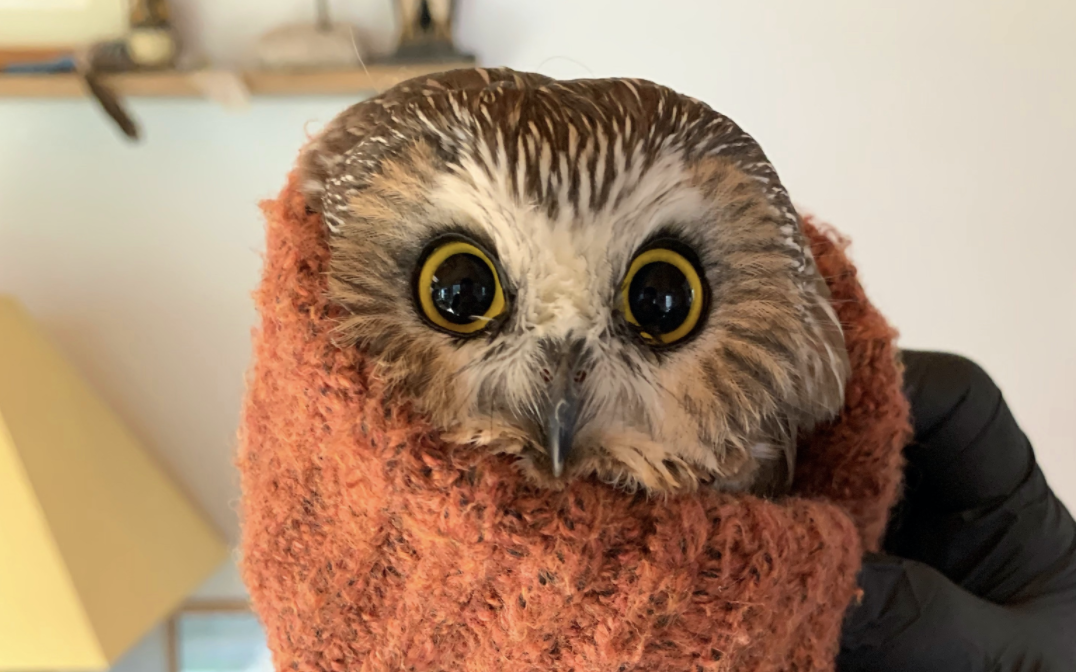The Animals of 2020
2020 was certainly an interesting year, to say the least. Life has changed dramatically for humans, as their lives have become increasingly devoid of physical interactions with fellow members of their own species.
However, during the long and lonely days of quarantine, many of their furry companions have kept spirits high. As the world happily bid adieu to the dumpster fire that was 2020 and ushered in the new year, we decided to take a look at some of the most noteworthy creatures that have made headlines in 2020.
January – RAT
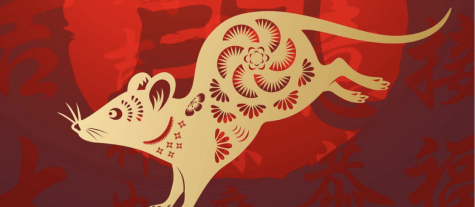
Before the COVID-19 pandemic shook the world, many individuals around the world gathered together with their loved ones to commemorate the fresh start to a 365-day cycle. While most Western countries choose to celebrate this holiday on the first day of the year, China and other Asian countries participate in a festival following the Lunar Calendar. According to the Chinese Zodiac, a cycle of animals formed based off of a popular myth recounted during the Lunar Festival, 2020 would be represented by a rat. In the famous legend, the rat was the first to reach the Jade Emperor’s palace out of the other eleven animals and was awarded the first position on the Zodiac. However, the rat was only able to reach the Emperor’s palace first by playing a series of dirty tricks and taking advantage of the other creatures competing against him, especially the kind ox who carried him across a deep river. The rat has certainly played a series of dirty tricks this year!
Source: https://www.oakridgecentre.com/blog/the-year-of-the-rat-2020/
February – BAT
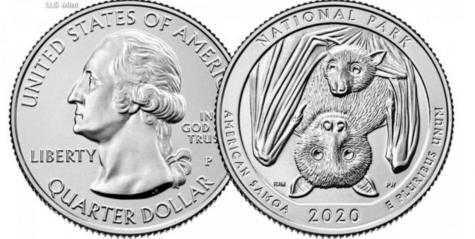
In true American fashion, the United States Mint waited for the celebration of the new year to die down before releasing the exclusive 2020 quarter. Even though the design had been selected and printed on coins in the previous year, the official release date for these circles of metal was February 3. What made these coins exceptionally appealing to collectors and investors alike was the environmental message of the coin. The design featured on the aforementioned collectible is an intimate and heart-warming depiction of a female Samoan fruit bat hugging her child. Although Mother’s Day is in May, February is the month of love! It is hard to find a more iconic duo than that of a cozy bat mom and her little baby. The emotion captured by the engraving in the 2020 coin will hopefully convince companies receiving the currency to invest in more environmentally friendly measures to help protect America’s ecosystems and the animal families within them.
Source: Samoan fruit bats featured on new quarter
March – TIGER
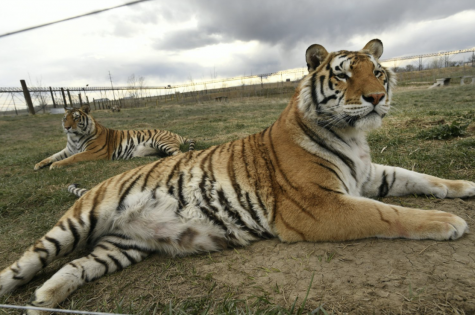
Even though the United States had only seen a handful of coronavirus cases, the government decided to declare a national emergency and put the country in a state of lockdown for two weeks to prevent the disease from spreading further. During this time, many citizens were trapped at home with nothing to do but panic. However, in America’s time of need, Netflix reached out its hefty corporate arms to the population and bestowed upon them the greatest means of escape: the first season of Tiger King. A year ago, it may have seemed completely bizarre that the world was only being held together by a show detailing the life of a tiger-loving felon with way too many tattoos. This television drama-documentary clawed its way into the hearts of many bored and discontent adults. Even though the show was escapism at its best, it did detail the abusive conditions that the Tiger King’s orange felines endured. The King himself was arrested soon after, which was likely the best news that many viewers had received during their lives in quarantine.
Source: Tiger King” animals now live at Colorado’s Wild Animal Sanctuary
April – DOLPHIN

At this point, the pandemic had spread even further amongst the United States population despite the nation’s two-week period of quarantine. As schools extended their closures and children were cooped up inside of their house, suburban mothers began to pray for an escape outside of their late-night reruns of Tiger King. So, as suburban mothers do, they turned to the Facebook posts of other moms for consolation. Between the hashtags showcasing quarantine life and the political banter, there was a speck of hope in a frequently shared post. Dolphins return to the Venice Canal, the posts would scream in dazzling colors. Images of poorly illustrated dolphins with Copypasta captions filled up Facebook walls and many mothers found themselves smiling amidst the chaos. However, those bright and cheery posts concealed a dark truth, and the truth was… that there were actually no dolphins in the Venice Canal to begin with. This commonly shared Facebook post became popular almost overnight, despite having no factual evidence to support the claim. Misinformation ran rampant in 2020, especially during the first couple of months when the coronavirus was first beginning to spread. The fake news about the Venice dolphins, however, became the most famous example of false information being spread through social media during this time.
May – HORNET
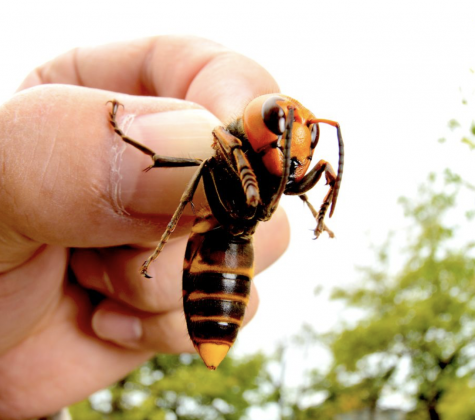
Just when people thought 2020 could not be any worse. Then, the world gets murder hornets. While the name “murder hornets” practically reeks of impending doom, these insects pose no direct threat to human life. However, their arrival in the United States spells disaster for the already waning honeybee population. Flowers, amongst other plants, need pollination to reproduce and prosper as a species, which is mainly accomplished by honeybees. As bees stagger dangerously near the extinction line, death and destruction loom over the area’s many flora and fauna. Without plants, humans will experience a lack of oxygen and food will become sparse. If that isn’t bad enough, these murder hornet scome equipped with a sharp stinger. No human enjoys the painful sensation of having a sharp needle injected through the layers of their squishy flesh by a bug that can barely handle its own body weight. Scientists and beekeepers have partnered together to exterminate as many murder hornets as possible, but they still pose a major threat to bees today.
Source: Murder Hornets,’ a.k.a. Asian Giant Hornets, Arrive in U.S.
June – LION’S MANE JELLYFISH
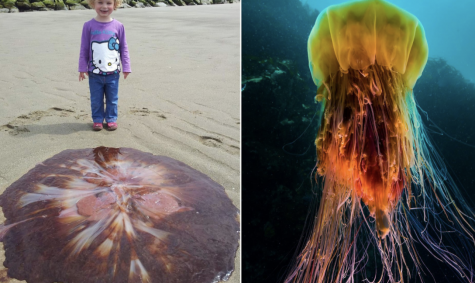
At this point in the year, coronavirus restrictions were becoming more lenient in the United States because of a slow drop in cases. As a result, many New Englanders were excited to hop into their cars and head to the Northeast’s many excellent beaches. Nothing could stop them from having the perfect beach day! Social distancing? Just stay away from everybody! COVID-19 restrictions? Eat outside in the nice weather! Nothing could possibly go wrong! That is, until you find yourself walking down a deserted beach covered in massive puddles of blood. Wait, never mind. It’s worse. Those massive puddles are not of blood, but of dangerous jellyfish that have washed ashore. Lion’s mane jellyfish are usually located far off the Atlantic Coast, but New England beaches were seen at an alarmingly high rate in the month of June 2020. The stings of these jellyfish are not fatal, but their tentacles can provide humans with some of the worst injuries caused by sea creatures. Not only are their stings incredibly painful, but they are huge. Next time, it might be better to stick to the sand where jellyfish can be easily avoided.
July – CHICKEN
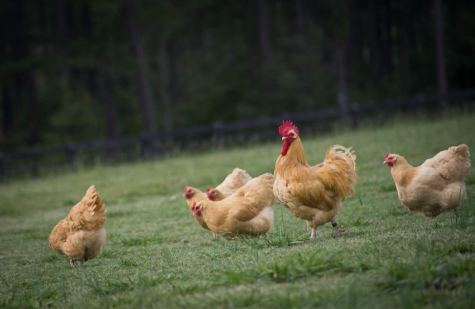
In July of 2020, CNN posted a widely read article unveiling the unsung heroes of the pandemic: chickens. The article, which is available to read by clicking the word “chickens” above, made some excellent points about how these beautiful birds could help some people combat food insecurity and lack of supply in grocery stores during the pandemic. Several students currently attending Worcester Academy got chickens this summer as well, who have confessed that they received joy when caring for the critters. Chickens are not only excellent companions and providers of eggs, but also keep yards free of dangerous bugs. Maybe the phrase “being chicken” shouldn’t have such a negative connotation after all!
Source: Raising Chickens – Breeds to Consider – P. Allen Smith
August – LOCUST
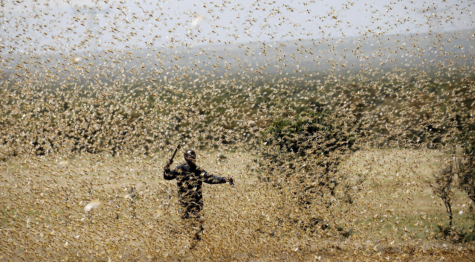
As if the virus had not caused enough destruction, many Kenyans found themselves in a difficult position after one of the worst recorded swarms of locusts descended upon their country. The agricultural industry in Kenya was all but destroyed by the time August came around. These abominable creatures would consume all of the crops grown by many hard-working farmers, which caused extreme famine across the land. Even though the agricultural laborers were able to salvage very little, they were reminded of the importance of teamwork as their communities pitched in to help lighten their sufferings. People shared food amongst each other, planted new seeds, helped with the farm work, and completed other important tasks. Now, as another harvest season approaches, the farmers look forward to the many extra crops they are able to reap and the rewards they will receive to help give back to the community that has helped them. Locusts are not powerful enough to withstand the strength and perseverance of a community.
Source: Locusts set to hit Kenya, East Africa again, 400 times stronger — Quartz Africa
September – SQUIRREL…
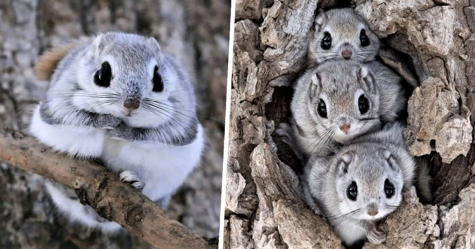
More specifically, the Japanese dwarf flying squirrel. Worcester Academy teacher Ming Tseng discovered these adorable little puffballs during a quarantine social media binge and fell head-over-heels in love. Since she lives on campus with her family, she is subjected to the mischievous hijinks of the Quad squirrels. The Japanese dwarf flying squirrel was a much more enjoyable alternative than the pesky rodents tearing up the grass on campus in search of acorns to stuff their face with. This particular type of squirrels are only found on a few Japanese islands, particularly the Honshu and Kyushu islands. Unfortunately, there will not be any wide-eyed fluffballs scurrying around WA anytime soon. However, there will still be opportunities to observe freshmen panicking after a squirrel jumps out of a trash can and runs in front of them without a single care in the world.
Tiny Squirrels That Look Like Pokémon Can Only Be Found On Remote Japanese Islands – UNILAD
October – FLY
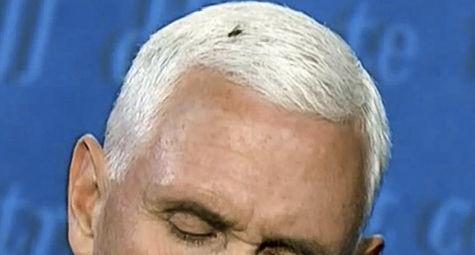
The one quality that unites the most divided of American citizens is the ability to find humor in the most bizarre areas of life. Whether it be the endless stream of gut-busting headlines involving Floridian criminals or the constant influx of fresh memes, the United States will always find something to joke about. After the controversy surrounding the poorly received presidential debate had settled, the population fell in love with a new political figure: the fly on Mike Pence’s head. During the vice presidential debate, a small insect managed to sneak past security and started attacking Mike Pence during his speech. The fly, being a fly, was only able to land on Pence’s hair but did some considerable damage to the former vice president by taking the spotlight for itself. Despite only being onstage for two minutes and thirty seconds, this fabulous fly absolutely crushed both of his opponents. Unfortunately, the fly would have scored his position as the first non-human vice president but the news has officially announced that it passed away from coronavirus not long after. In retrospect, Kamala Harris was definitely a much better choice than a fly. Rest in peace, little fly guy.
Source: Fly lands on Pence’s head during debate, causing internet buzz – KVIA
November – MINK
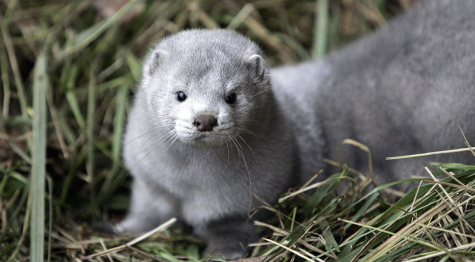
For the citizens of Denmark, bone-chilling nightmares did not just end on Halloween night (All Hallow’s Eve). The government of Denmark had killed off a vast majority of the mink population because they were trying to prevent the coronavirus variant present in minks from spreading to other creatures. This widespread massacre came back to haunt them, as tens of thousands of headless minks rose out of their graves as if they were zombies. This phenomena was not the animals returning from the dead to get revenge, however. Other underground machines that produced gas built up enough pressure to push the minks out of the holes they were buried in up to the surface. Unfortunately, the government had to use other methods to put the minks to rest. Since then, many government officials have been fired due to the mistreatment of the mink population and the minks are regrowing in numbers once again. This time, the government has committed themselves to protecting these creatures from harm and have requested European scientists to make coronavirus vaccines specifically for animals.
Source: First case of coronavirus detected in wild animal – BBC News
December – OWL
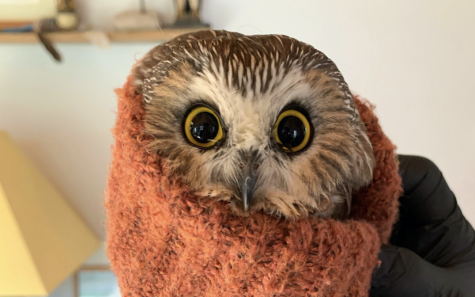
Even though 2020 was undeniably difficult for both animals and humans, the year decided to wrap up one feel-good tale to put under the Christmas tree before ending with a bang. As the last leftovers of Thanksgiving were devoured and Christmas cheer began to spread to the citizens of New York, many decided to put on their festive masks in order to participate in America’s favorite holiday tradition. This, of course, is the annual lighting of the Rockefeller Center tree. Before the lighting ceremony could commence, however, some people noticed a tiny bundle of feathers struggling to hold on to the tree’s pine-covered branches. It was an owl! Immediately, the community stepped in to help this little owl and city officials took the bird to a local wildlife rehabilitation facility. There, the owl was cared for and nursed back to health. Once experts at the rehabilitation center cleared the small creature, they released him back into the wild and watched him fly away into the rising sun. Yankee Candles were surely not the only things melting that day!
Source: Rescue owl named Rockefeller found inside scraggly Christmas tree in New York – The Washington Post

